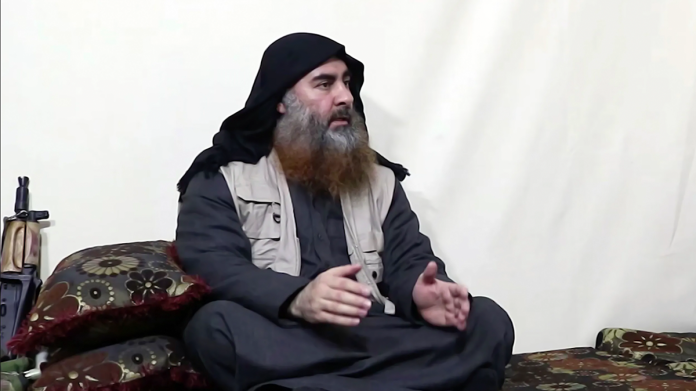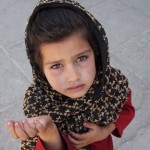Nusrat Mirza
The terrorist activities of ISIS or Daesh, are on the rise in countries like Pakistan, Iran, Afghanistan, and Central Asian nations. The branch of Daesh linked with Tehrik-i-Taliban Pakistan is based in Afghanistan and has become a central hub of terrorisma fact that the Afghan Taliban government has yet to fully acknowledge. ISIS’s growing presence in Afghanistan poses a significant threat to the Afghan Taliban, Pakistan, Iran, Russia, Central Asian countries, and China. Initially, the U.S. intelligence community believed that ISIS could be used as a strategic tool to exert pressure on Russia and confine it within its borders.
Over time, ISIS has been known by various names including Daesh and ISIL, and it harbors ambitions to establish a Muslim state called Dolate Islamia Khurasan, which would extend from Syria and Iran to Turkey and other Islamic nations. This concept is inspired by the historical Khorasan state, a once-powerful Muslim empire believed by some Muslims to herald a renaissance for the Muslim world.
From the outset, I researched and concluded that Daesh is a tool employed by some Western powers to destabilize the Muslim world, particularly targeting Pakistan while keeping an eye on Russia and China. It was disclosed that around 200 fighters came from Europe and 100 from North America, with Israel providing the necessary weapons and funds. Regrettably, the Muslim world failed to grasp the full implications of this development, similar to how Turkey provided safe passage and lodging to these fighters en route to Syria, mirroring Pakistan’s support for the Taliban during their struggle against the Soviet Union.
The plan, suspected to be influenced by designs for a greater Israel, aimed to redraw the boundaries of the Middle East to include Iran and Pakistan. Israel’s support for Daesh was apparent, evidenced by the medical treatment provided to wounded Daesh fighters within Israel. Daesh was decisively defeated by Russia and Iran in Syria after intense battles. Subsequently, thousands of ISIS fighters were transported from Syria to Afghanistan aboard unmarked planes. Observers estimated that around ten thousand ISIS fighters relocated. While there were initial clashes between the Afghan Taliban and ISIS, the Taliban appeared to defeat them, though this may have been a temporary tactical retreat by ISIS. When the Afghan Taliban formed a government, ISIS began to flex its muscles more openly.
Despite the Afghan Taliban initially dismissing ISIS as a minor issue, the situation proved to be challenging. For instance, an attack near the Pakistan border on August 24, 2019, in Jalalabad, Afghanistan following the successful U.S.-Afghan Taliban negotiations highlighted ISIS’s readiness to escalate their tactics through suicide attacks, bombings, and direct confrontations using advanced weaponry from the USA, Europe, and other countries, including India, which has increasingly opposed Pakistan, the Afghan Taliban, Iran, and, more directly, China and Russia. The Afghan Taliban are advised to maintain close relations with Pakistan, Iran, China, and Russia, both covertly and overtly. Russia’s vested interest in Afghan peace has spurred peace talks with the USA, enhancing the Afghan Taliban’s position through the Shanghai Cooperation Organization, which remains a supportive element in the Afghan peace process.
This collaboration is crucial, especially in the face of potential provocations by the USA or India. The Afghan Taliban, known for their simple appearance and diplomatic acumen, have shown remarkable bravery and strategic insight. In dealing with ISIS, they must tackle the issue with determination and wisdom, seeking support from Pakistan, Iran, China, and Russia, all of which are prepared to assist in combating the threat posed by ISIS.
The author is the Chief Editor of Interaction.
Iranian president visit: opportunities and challenges for Pakistan
Mirza Kashif Baig
The recent visit of the Iranian President to Pakistan marks a significant milestone in the long-standing relationship between the two neighboring countries. This diplomatic engagement comes at a crucial time when both nations are navigating complex regional dynamics and looking to strengthen bilateral ties. The visit not only symbolizes a mutual desire to enhance cooperation but also serves as a strategic move to address common challenges in economic, security, and cultural domains.
Historical context
The relationship between Iran and Pakistan is deeply rooted in a shared historical and cultural heritage. This bond has been nurtured over decades through mutual respect and cooperation, reflecting a commitment to regional stability and bilateral strength despite international political shifts.
From the outset, Iran and Pakistan established a relationship based on mutual respect and support. Iran was the first country to recognize Pakistan’s sovereignty after its independence in 1947. In the years that followed, both nations engaged in frequent diplomatic exchanges that strengthened their ties. Pakistan has consistently supported Iran during significant global events, advocating for its right to peaceful nuclear technology and standing against unilateral sanctions that could affect the Iranian economy and regional stability.
One of the defining moments in Iran-Pakistan relations occurred during the Iran-Iraq War from 1980 to 1988. Despite the complexities of the geopolitical landscape at that time, Pakistan demonstrated its commitment to Iran by providing humanitarian aid and support. Pakistan’s efforts were not limited to diplomatic neutrality; it actively sent shipments of humanitarian assistance to alleviate the suffering of the Iranian people during the conflict. This support underscored Pakistan’s approach to upholding its moral and diplomatic principles, fostering a sense of goodwill and reinforcing bilateral ties under difficult circumstances.
In more recent history, Pakistan has actively sought to deepen economic ties with Iran, particularly in energy cooperation. The Iran-Pakistan gas pipeline project, despite facing delays and challenges, exemplifies the significant potential for energy collaboration between the two countries. Additionally, joint efforts in combating drug trafficking and managing cross-border security highlight their shared interests in regional peace and security.
Cultural and religious connections between Iran and Pakistan have long served as a bridge between the two nations. These ties are manifest in numerous cultural exchanges, religious tourism, and shared reverence for common heritage sites significant in Islamic history. The strong spiritual and cultural bonds have provided a resilient foundation for their diplomatic relationship, emphasizing mutual respect and understanding.
Purpose of the visit
The Iranian President’s visit to Pakistan is a strategic engagement designed to deepen bilateral relations and address key issues of mutual interest. This visit is characterized by discussions and negotiations across several pivotal areas:
The primary goal of this visit is to reinforce and reinvigorate diplomatic ties between Iran and Pakistan. The leaders aim to establish a comprehensive strategic partnership, which includes enhancing political dialogue and cooperation at various levels of governance. Addressing and resolving outstanding bilateral issues, such as border security concerns and trade barriers, is crucial for building trust and stability between the two nations.
A major focus is on advancing significant joint energy projects like the Iran-Pakistan gas pipeline. This project is seen as a cornerstone of energy cooperation that could transform Pakistan’s energy landscape and ensure energy security. Discussions aim to explore new avenues for increasing trade and economic interactions, focusing on reducing tariffs and improving logistics and connectivity between the two countries.
The discussions include strategies for combating terrorism and enhancing border security. Both countries are keen to curb the influence of terrorist groups and manage cross-border criminal activities that threaten regional stability. There is a concerted effort to harmonize their stances on regional security issues, including the situation in Afghanistan and the broader Middle East.
Promoting cultural ties and understanding through exchanges in arts, literature, and education. Initiatives may include joint cultural festivals, language programs, and academic conferences. Enhancing academic collaborations through scholarships, joint research initiatives, and student exchange programs.
Amid regional tensions, particularly with respect to Iran’s stance on Israel, Iran seeks Pakistan’s support in mediating and potentially dampening conflicts. These discussions are intended to explore ways Pakistan can assist in fostering regional peace and preventing escalations.
Opportunities for Pakistan
The visit of the Iranian President to Pakistan opens a multitude of opportunities across several domains. These opportunities not only foster stronger bilateral relations but also promise substantial benefits for Pakistan in economic, strategic, and cultural spheres.
The completion of the Iran-Pakistan gas pipeline can significantly alleviate Pakistan’s energy shortages by providing a steady and reliable source of natural gas. This project not only supports Pakistan’s energy needs but also strengthens economic ties between the two countries.
With Iran’s strategic location and resources, there is vast potential for increasing bilateral trade. Reducing trade barriers and enhancing transportation links can lead to a boost in trade volumes, benefiting industries in both countries.
Strengthened ties could lead to increased Iranian investment in Pakistan’s infrastructure and manufacturing sectors, fostering economic growth and job creation.
Collaborative approaches toward regional issues, including security and conflict resolution, can enhance stability in South Asia and the Middle East.
Joint efforts in combating terrorism and managing border security are crucial for maintaining peace along the shared border, and preventing the movement of militant groups and illegal activities.
Strengthened relations with Iran could enhance Pakistan’s influence in Muslim-majority countries, balancing its international relations, especially within the context of its relationships with other regional powers like Saudi Arabia and the UAE.
Increased educational and cultural exchanges can foster better understanding and relations between the populations of both countries, creating long-lasting bonds.
Promoting religious and cultural tourism can benefit both nations, with Pakistan hosting Iranian tourists visiting historical and religious sites, boosting local economies.
Diplomatic challenges
The strengthening of ties between Iran and Pakistan, while beneficial in many respects, introduces several diplomatic challenges that require careful navigation. Pakistan maintains historically significant relationships with Gulf Cooperation Council (GCC) countries, particularly Saudi Arabia and the UAE, both of which have had strained relations with Iran. Enhancing ties with Iran might be perceived as a shift in Pakistan’s foreign policy, which could lead to diplomatic tensions. Pakistan will need to assure its Gulf allies that its closer relationship with Iran will not come at the expense of its commitments to them.
The United States has had a complex relationship with Iran, especially concerning nuclear programs and regional security issues. As Pakistan seeks to balance its relationship with both the U.S. and Iran, it faces the challenge of navigating U.S. sanctions against Iran. Engaging economically or in significant strategic partnerships with Iran could potentially lead to complications in U.S.-Pakistan relations, including financial and military aid considerations.
While Pakistan aims to enhance economic ties with Iran, particularly in energy and trade, it must also consider the international sanctions regime. Engaging with Iran under the current sanctions landscape requires a nuanced approach to avoid any punitive measures from the international community, which could include restricted access to international banking systems and economic penalties.
Pakistan must develop a strategy to engage with Iran that respects international legal frameworks while pursuing its national interests. This involves diplomatic dialogue with major world powers and ensuring that its actions are transparent and well-communicated to avoid misunderstandings.
Any significant shift in Pakistan’s policy towards Iran could elicit reactions from neighboring countries, including India and Afghanistan, which have their own complex relations with Iran. Pakistan will need to manage this regional diplomacy carefully to maintain stability and peace in South Asia.
Conclusion
The visit of the Iranian President to Pakistan marks a significant moment in the diplomatic relations between the two neighboring countries. This visit is not merely a ceremonial gesture but a strategic engagement aimed at deepening ties across multiple dimensions including economic, strategic, cultural, and political arenas. It holds the promise of enhanced bilateral cooperation that could bring substantial benefits to both nations.
The future of Iran-Pakistan relations looks promising, with potential for significant mutual benefits. If both countries manage to effectively address the outlined challenges, especially through diplomatic finesse and strategic engagements, this partnership could serve as a cornerstone for regional stability and economic prosperity.
Ultimately, the success of this renewed engagement will depend on continued commitment from both sides to uphold agreements and constructively address any arising issues. The international community, along with regional stakeholders, will be watching closely as Pakistan and Iran navigate this complex but potentially rewarding path.
The author is the Editor of Monthly Interaction.







